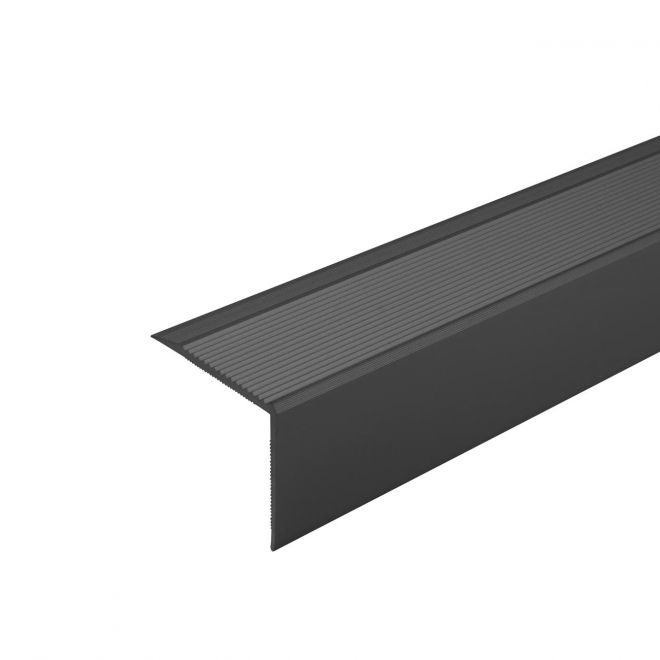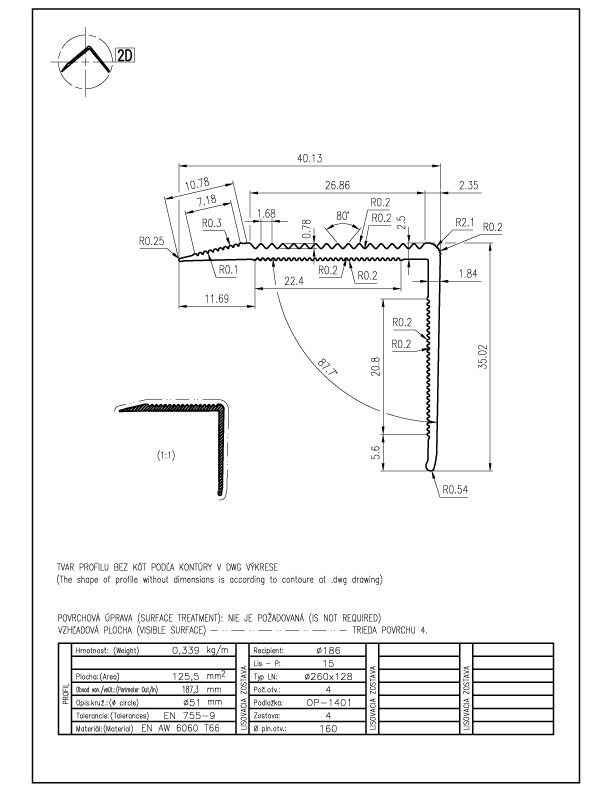ALH elox C-34 stair nosing made of aluminium
Aluminium stair nosing, grooved surface of the tread side
Sign up
and get discount
Aluminum Stair Nosings
Understanding why slips and trips occur on stairs is the first step in preventing accidents. The most serious stair-related injuries happen when descending. While accidents also occur when going up the stairs, they are less frequent and usually less severe.
The main causes of accidents when walking down stairs are:
- Misstep – when the tread area of the step is not clearly identified, and the foot lands in the empty space before the next step.
- Slip – when there is not enough friction on the edge of the stair tread and the foot slides.
Aluminum stair nosings significantly reduce the risks of missteps and slips. With their anti-slip surface, they increase traction and provide a clear visual and tactile distinction of the stair edge, helping prevent accidents and making stairways much safer.
MISSTEP on Stairs
Missteps occur more often on narrow stair treads, such as those found on steep staircases. The foot is forced to step forward, and under poor lighting or on monochrome stairs, it is easy to place the foot into empty space instead of onto the next step — causing a fall forward. Injuries from this type of fall are often very serious, sometimes resulting in permanent damage or even death. From above, monochrome stairs without any visual contrast can appear as a continuous ramp. This issue is even more pronounced in industrial settings, where open-grid metal stairs create a confusing “mosaic” pattern without clear definition of the steps. Missteps can be effectively prevented by adding an aluminum anti-slip stair nosing.
SLIP on Stairs
When descending, most people place the ball of the foot slightly over the stair edge. This means the main surface of the tread is barely used, and wear occurs on a very narrow strip — about 20–25 mm on the tread and about 10 mm on the riser. Over time, this area becomes smooth and loses traction: paint peels, wood frays, carpet unravels, and metal becomes polished. As a result, grip is reduced exactly where it is needed most. When stairs are wet, dusty, or greasy, the risk of slipping increases dramatically. This problem can be easily and safely solved by installing an aluminum anti-slip stair nosing.
SOLUTION – ALUMINUM ANTI-SLIP STAIR NOSING
A single high-quality product can solve both misstep and slip hazards at once – the aluminum anti-slip stair nosing. Installed directly on the edge of the stair tread, it provides: a clear contrast line that visually and tactilely defines the edge of the stair and prevents missteps, a robust anti-slip zone with high traction exactly where it is most needed.
PVC COLOR INSERT for Stair Nosings
The safety PVC insert for aluminum stair nosings features a modern design, available in multiple colors and three slip-resistance classes (R10, R11, R12). It ensures secure footing even in wet conditions, offers long service life, excellent scratch resistance, and is easy to clean.
GLOW-IN-THE-DARK INSERT for Stair Nosings
The photoluminescent insert, integrated into the aluminum stair nosing profile, uses a self-charging material applied to a thin aluminum plate and coated with glass beads for improved slip resistance. In darkness or during power outages, the stair nosing edges remain illuminated for hours, clearly marking the escape route to safety.


















































